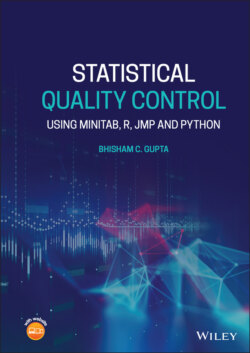Читать книгу Statistical Quality Control - Bhisham C. Gupta - Страница 43
2.2 What Is Six Sigma?
ОглавлениеIn statistics, the lowercase Greek letter sigma (σ) represents the population standard deviation, which is a measure of variation or spread. In the quality field, we aim to reduce the process standard deviation to achieve more consistent outcomes. Whether we are measuring the dimension of a metal flange, inner diameter of a pipe, burst strength of a package, monthly labor costs for a division, or repair time of a subassembly, a repeatable process is the desired state.
If we were limited to a single‐sentence elevator speech to describe Six Sigma, a reasonable definition might be “Six Sigma is a quality approach that strives to reduce variation and decrease defects, which results in increased customer satisfaction and improved bottom‐line results.” If we dig a little deeper, however, it becomes clear that there are at least three different definitions of the term Six Sigma. Six Sigma can be correctly classified as a management philosophy; it is also defined as a systematic approach to problem‐solving. Last, Six Sigma is a term used for a statistical standard of quality. Let’s explore each of these definitions in more detail.
